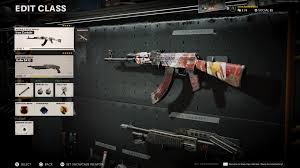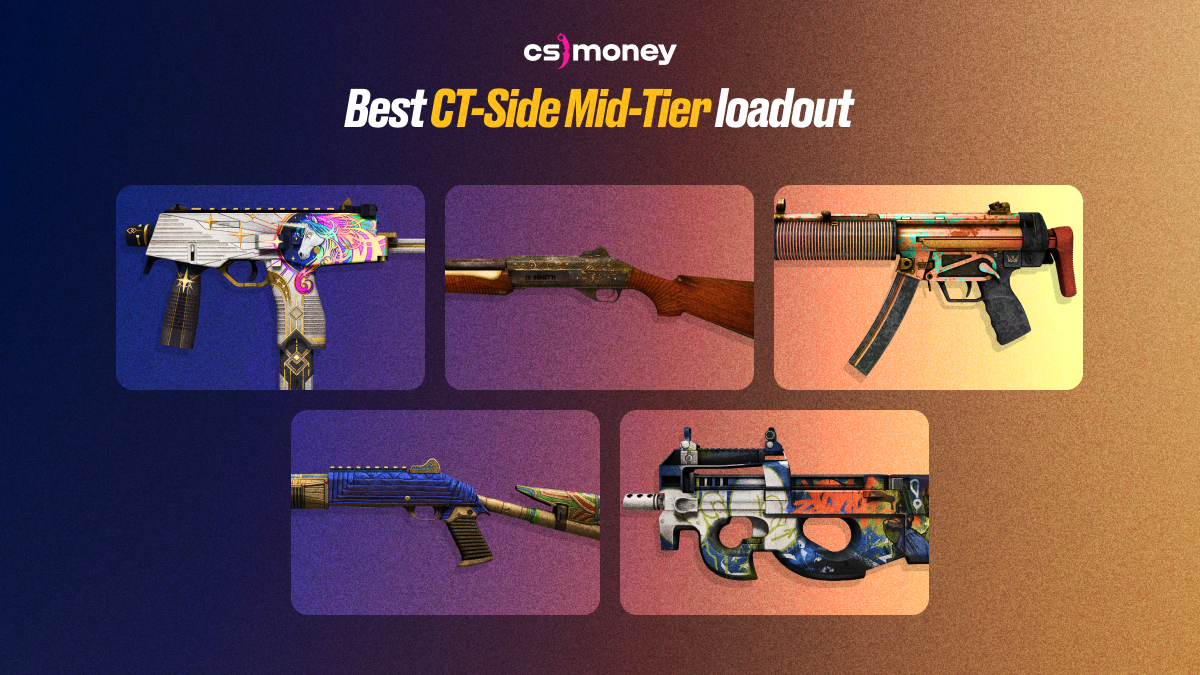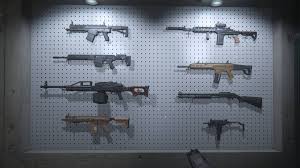Contents
- 1 Key Elements of a Weapon Loadout
- 1.1 Factors Influencing Loadout Choices
- 1.2 Popular Weapon Loadout Strategies in Gaming
- 1.3 Real-World Weapon Loadouts for Tactical Applications
- 1.4 Innovations and Trends in Weapon Loadouts
- 1.5 Tips for Crafting the Perfect Loadout
- 1.6 The Role of Weapon Loadouts in Competitive Scenarios
- 1.7 Ethical Considerations in Weapon Loadout Design
- 1.8 Conclusion
- 2 Author
Weapon loadout refers to the selection and customization of weapons and equipment carried by an individual in various scenarios, including gaming, military operations, or survival situations. The goal is to optimize performance based on the user’s role, mission objectives, and personal preferences. A well-thought-out loadout ensures versatility, firepower, and adaptability to different challenges.
The concept of a weapon loadout is most commonly encountered in tactical video games and military contexts. In gaming, it involves choosing primary and secondary weapons, attachments, grenades, and perks. In real-world applications, it entails selecting firearms, ammunition, protective gear, and accessories suited for the environment and mission.
Key Elements of a Weapon Loadout

Weapon loadouts typically include several core components that work in harmony to enhance performance. Understanding these components helps in creating a balanced setup.
- Primary Weapon: This is the main tool of engagement, often chosen for its reliability, range, and firepower. In gaming, primary weapons could range from assault rifles to sniper rifles, while in real life, they include rifles or carbines.
- Secondary Weapon: A backup weapon, such as a pistol or submachine gun, is essential for situations where the primary weapon is unavailable or ineffective.
- Melee Weapon: A close-combat option like a knife or machete adds versatility, especially in stealth scenarios.
- Equipment and Gadgets: This category includes grenades, flashbangs, smoke screens, and other tools to provide tactical advantages.
- Attachments: Scopes, suppressors, grips, and extended magazines enhance the performance of weapons by improving accuracy, reducing recoil, or increasing ammunition capacity.
- Armor and Gear: Protective equipment ensures survival in high-risk environments. It includes body armor, helmets, and tactical vests.
Factors Influencing Loadout Choices
The effectiveness of a weapon loadout is influenced by several factors. These considerations are crucial whether the loadout is designed for virtual or real-world scenarios.
- Mission Objectives: The goals of a mission or game dictate the type of weapons and equipment needed. Stealth missions may require silenced weapons, while assault missions call for high-damage firearms.
- Environment: Urban, rural, or forested settings affect weapon choice. For example, sniper rifles excel in open spaces, while submachine guns are ideal for close-quarters combat.
- Personal Playstyle: Players or operators often choose loadouts that complement their skills and preferences, whether aggressive, defensive, or support-oriented.
- Team Composition: In team scenarios, loadouts are often designed to complement the roles of teammates, ensuring a balanced distribution of firepower and utility.
Popular Weapon Loadout Strategies in Gaming

Video games provide a controlled environment for experimenting with different weapon loadouts. Some popular strategies include:
- Sniper and Spotter Combination: This setup pairs a long-range sniper rifle with a pistol or submachine gun for close encounters. Attachments like a long-range scope and suppressor enhance stealth and precision.
- Assault Dominance: An assault rifle with attachments like a red-dot sight and foregrip, paired with a grenade launcher or frag grenades, ensures dominance in medium-range firefights.
- Run-and-Gun Loadout: A submachine gun with a lightweight build, complemented by perks for increased mobility, suits players who prefer aggressive tactics.
- Support Role: Shotguns or light machine guns, paired with smoke grenades and deployable cover, are ideal for holding positions and supporting teammates.
- Stealth Specialist: A silenced pistol and throwing knives, combined with perks for silent movement, enable covert operations.
Real-World Weapon Loadouts for Tactical Applications
In real-world scenarios, weapon loadouts are meticulously crafted for efficiency and adaptability. Military, law enforcement, and survivalist loadouts differ based on their specific needs.
- Military Loadouts: Military personnel customize their loadouts based on mission requirements. An infantry soldier might carry an assault rifle with a grenade launcher, while a sniper may carry a bolt-action rifle with a spotter’s gear.
- Law Enforcement Loadouts: Police tactical units prioritize non-lethal options alongside firearms. A typical loadout includes a carbine rifle, a sidearm, a taser, and protective gear.
- Survivalist Loadouts: For survival scenarios, loadouts focus on reliability and portability. A lightweight rifle, multi-tool, compact flashlight, and sufficient ammunition are common choices.
Innovations and Trends in Weapon Loadouts
The evolution of technology continues to influence weapon loadout strategies. Innovations like modular weapon platforms, advanced optics, and lightweight armor enhance effectiveness and customization.
- Modular Weapons: Modern firearms offer modular designs that allow users to swap barrels, stocks, and attachments based on mission needs.
- Advanced Optics: Red-dot sights, holographic scopes, and thermal imaging enhance target acquisition in diverse environments.
- Smart Technology: Weapons with integrated rangefinders, ballistic calculators, and recoil compensators are becoming increasingly popular.
- Lightweight Gear: Advancements in materials science have led to lighter armor and equipment without compromising protection.
Tips for Crafting the Perfect Loadout

Creating an optimal weapon loadout requires careful consideration and experimentation. Here are some tips for crafting a setup that suits your needs:
- Prioritize Versatility: Choose weapons and equipment that perform well across multiple scenarios.
- Balance Firepower and Mobility: Avoid overloading your loadout with heavy gear that hinders movement.
- Test and Adjust: Experiment with different combinations to find what works best for your playstyle or mission.
- Consider Recoil and Accuracy: Attachments like grips and compensators improve weapon control.
- Account for Ammunition: Carry sufficient ammunition without compromising mobility.
The Role of Weapon Loadouts in Competitive Scenarios
In competitive gaming and military training, weapon loadouts play mariatogel a critical role in success. Teams often strategize loadouts to complement their tactics and adapt to opponents’ strategies.
- Team Synergy: Teams with complementary loadouts can cover more scenarios, from assault to support roles.
- Dynamic Adjustments: In competitive settings, adaptability is key. Players and operators must be ready to switch loadouts mid-game or mission.
- Psychological Impact: The sight and sound of certain weapons can intimidate opponents, giving players a psychological edge.
Ethical Considerations in Weapon Loadout Design
While weapon loadouts are exciting to design and utilize, ethical considerations must be taken into account, especially in real-world applications. The use of non-lethal options and adherence to international laws ensures responsible deployment.
- Minimizing Collateral Damage: Choosing precision weapons and non-lethal options helps avoid unnecessary harm.
- Respecting Regulations: Following laws governing weapon usage prevents misuse and legal consequences.
Conclusion
Weapon loadouts are a blend of strategy, customization, and adaptability, whether in the virtual realm of gaming or real-world tactical operations. By understanding the components, strategies, and ethical considerations, individuals can create loadouts that align with their goals and excel in their respective scenarios. Mastering the art of loadout crafting not only enhances performance but also adds depth to the experience, making every engagement more dynamic and rewarding.
